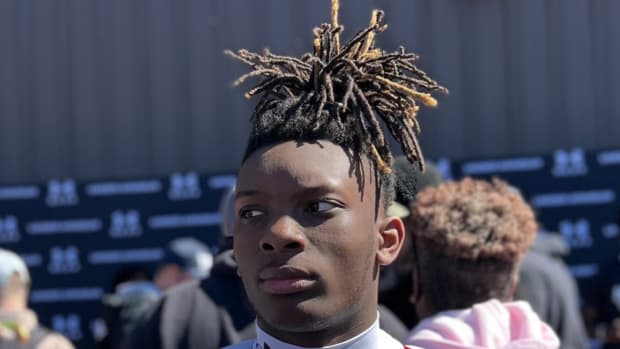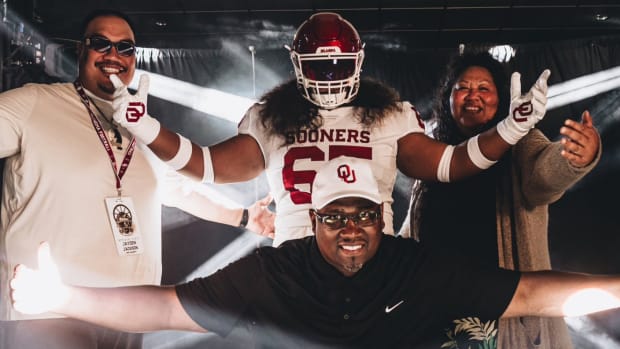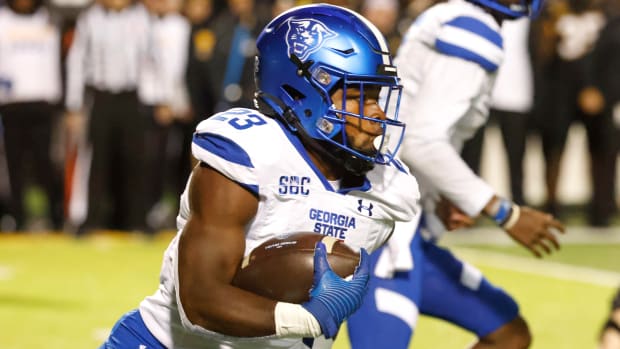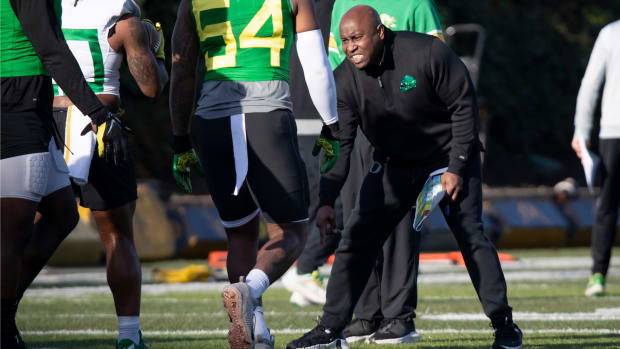Why Some Programs Don't Wait Until Spring to Start Spring Practice
The national championship might seem like it was last week, but somehow, spring football is already on the horizon. With most teams starting their practices in mid-March, this might seem like a premature oh hooray it’s football message—but it’s not. In fact, by the time you read this, multiple teams will have already started spring (er, late winter, freezing-cold, seasonally-confused) ball, before the end of the third week of February.
You have reached your limit of 4 premium articles
Register your email to get 1 more
Appalachian State began practices on Feb. 5. Liberty, an independent moving up to FBS this season, kicked off on Feb. 10. Western Michigan, East Carolina, Colorado and Air Force all started between Feb. 20 and Feb. 23. That means it’s time to start tracking the newest quarterback arrivals, or worrying about minor injuries, or just salivating at the prospect of fall being just around the corner (kind of ... not really). It’s also time to wonder: Can’t this wait until March? Why, exactly, do some teams start practices so early, while others wait almost an additional month to get football underway?
Northwesternstarts practice next week, on Feb. 27. The Wildcats are typically one of the first programs to get going, but this year they begin toward the end of the early wave. In this case, the explanation is easy: the academic calendar. Northwestern is on the quarter system, so its breaks and exams don’t line up with most other schools’, and with stringent academic requirements, the team is conscious of players’ schedules as they work around midterms and finals.
Duke, which has started in mid-February in recent years, actually pushed its practices later this year. In the past, when the team finished spring ball early, players had more time before finals to focus on studying, a valuable advantage for a school known for its academic rigor. But in the case of the Blue Devils, last season’s calendar seemed like a logical enough reason to push back spring ball. With changes to the rules governing preseason camp, teams got an extra week of preseason, and in 2017, unlike the year before, Duke played in a bowl game, earning an extra month of practices. Coaches felt that after an extended season the team could afford a longer break before returning to the practice field.
This winter marked the first in the new recruiting calendar, the ramifications of which affect spring ball. This time of the offseason is busier, recruiting-wise, than in previous years due to the early signing period in December, which has put more on coaches’ plates in addition to planning and executing spring practices. With this year’s recruiting class largely settled, coaches jumped into 2019 recruiting in January of 2018, giving them less free time to plan spring ball; in the past, they would have been wrapping up the current year’s recruiting class rather than making the rounds on a whole new crop of players, and the post-signing day lull allowed for a brief window of self-reflection before practice resumed. But with so many players already signed by the new year and most set to commit just 10 months from now, the cycle moves forward and demands more work early in the process.
Air Force began practice on Feb. 20. That was almost entirely due to the academy calendar and its rigors. Coaches prefer the team to have wrapped up practice before spring break, so that they can spend the final few weeks of the semester focused on their schoolwork and other duties.
Early spring practice means players who get injured have more time to heal before the season. A player who gets injured in February and has a six-month recovery would be ready for the season. The same injury in March would necessitate that player sitting out early-season games.
East Carolina started early this year for the first time in third-year coach Scottie Montgomery’s tenure. Integrating new defensive coordinator, David Blackwell was a big reason for the schedule change. Early spring ball allows players acclimate to Blackwell’s scheme and style sooner, giving them more time before the season to become familiar with his defense before breaking off to practice on their own over the summer.
But Montgomery said the plan to move earlier was a long time in the making. Since taking over at East Carolina, he has been working toward the early start date, which took some logistical maneuvering. He polled his players, who largely say they prefer the late-winter start—plus, after spending several seasons starting early on David Cutcliffe’s staff at Duke, Montgomery is familiar with the timetable. He also cited another potential benefit: Going into the summer, Montgomery wants his players to be able to focus aggressively on nutrition, strength and conditioning, and with this year’s schedule, they won’t be limping out of spring ball into that intensive period. Instead, they’ll have had some time to rest.




